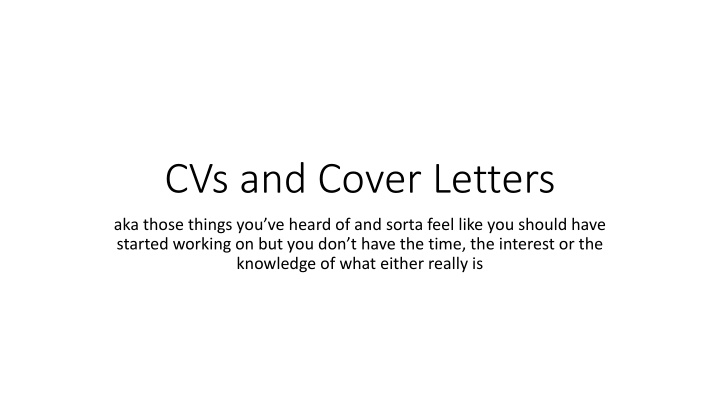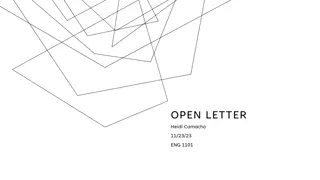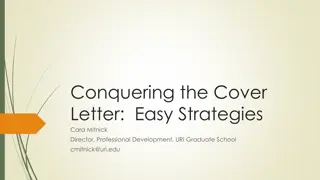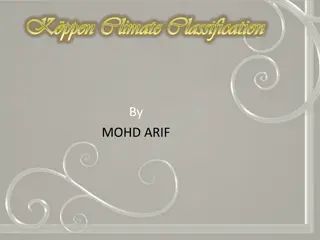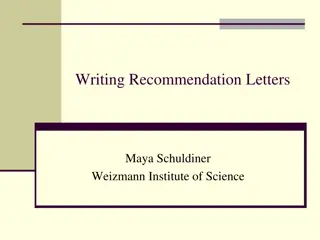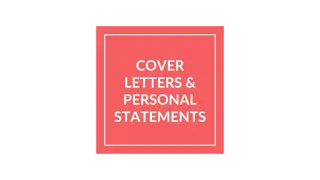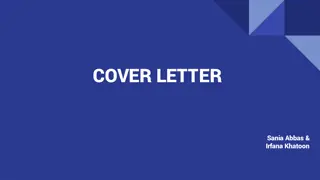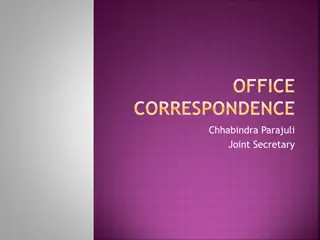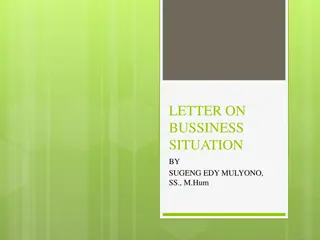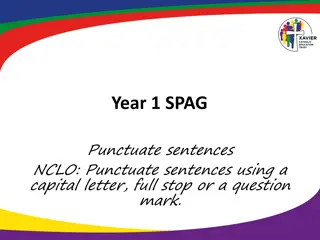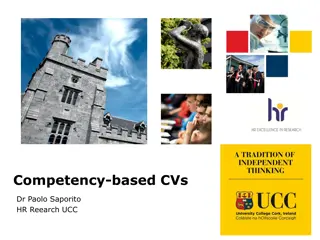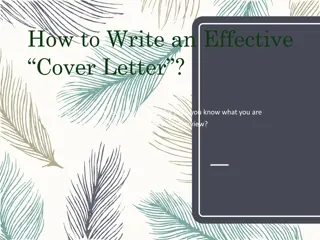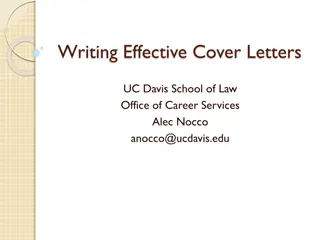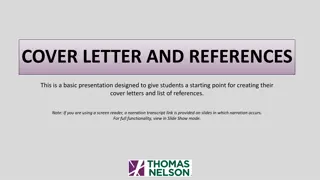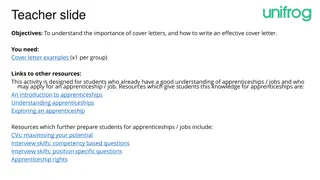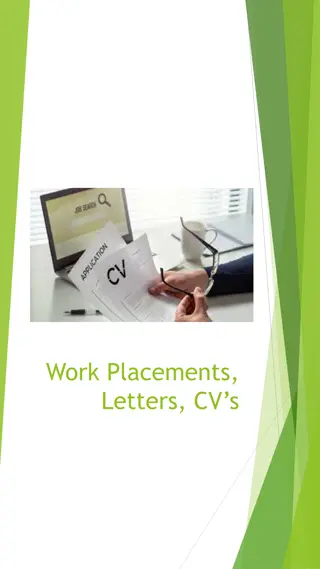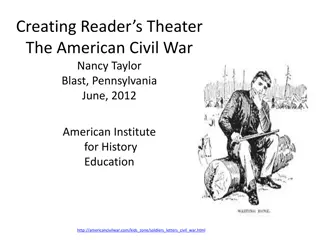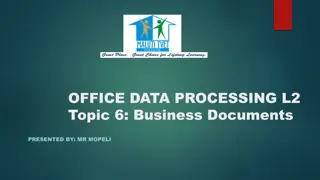Demystifying CVs and Cover Letters: Understanding the Basics
Unravel the world of CVs and Cover Letters with insights on CV vs Resume, types of Curricula Vitae, Educator's Portfolio, common mistakes to avoid, and the significance of following the format. Learn why a well-crafted CV matters for showcasing your competence to potential employers.
Download Presentation

Please find below an Image/Link to download the presentation.
The content on the website is provided AS IS for your information and personal use only. It may not be sold, licensed, or shared on other websites without obtaining consent from the author.If you encounter any issues during the download, it is possible that the publisher has removed the file from their server.
You are allowed to download the files provided on this website for personal or commercial use, subject to the condition that they are used lawfully. All files are the property of their respective owners.
The content on the website is provided AS IS for your information and personal use only. It may not be sold, licensed, or shared on other websites without obtaining consent from the author.
E N D
Presentation Transcript
CVs and Cover Letters aka those things you ve heard of and sorta feel like you should have started working on but you don t have the time, the interest or the knowledge of what either really is
CV vs Resume Resumes Used more in the business world Brief review of work experience and skills Typically a page or less Highly tailored to the job CV Used more in academics More descriptive of education and experience Typically two pages More generalized
Types of Curricula Vitae Academic CV Geared towards folks who want to be clinician educators or apply for grants Use the OHSU format Also requires an Educator s Portfolio Non-academic CV Geared towards folks who are applying to non-academic jobs (most of you) Use the provided sample format No Educator s Portfolio required However, if you are thinking of going back to academics you should keep one
Educators Portfolio [an] Organized means of presenting the breadth, volume and effectiveness of your teaching contributions Alan Hunter That thing I keep forgetting to update - everyone Beyond the scope of today s talk
What is the number one mistake people make with their CV? Besides being weirded out that the pleural of CV is CV
CV Should be: Organized Easy to follow Highlight important aspects of your career Not ugly
Why does all this matter? 1) The people reviewing your CV are reading lots and lots of them so small errors stand out 2) It is the most basic test of your competence If you cannot even do this correctly it doesn t say great things about your ability to do the actual job Is that fair? No. But that s how it is.
OHSU CV Template Contact information Current Academic Position (if you have one) Education (includes residency training) Professional Experience (if you have worked after graduating) Scholarship Research Publications Lectures/Conference presentations/Professorships Service Professional society membership Committees Community Service Teaching Honors & Awards
Non-Academic Template Contact information Education (includes residency training) Scholarship Research Publications (posters, abstracts, book chapters, etc) Teaching Honors & Awards
Cover Letter Your chance to: Explain any gaps in your CV Add context to things you ve done Sell yourself Not a place to be: Overly humble Overly arrogant Funny Unless you re an amazing writer, keep it: Structured Straightforward
Cover Letter Tips Identification Your name and contact information The name, title, organization of the person you re right to Should be no more than three (or four) paragraphs Paragraph 1: Intro Paragraph 2: Sell yourself. Why you over other applicants? Paragraph 3: Quick conclusion Closing Sincerely, Best regards, or Yours truly are all fine
